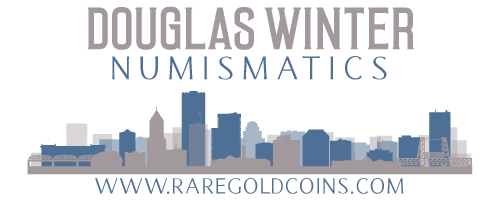1804 Eagle
/One of my favorite early United States gold coins is the 1804 eagle. I was recently able to purchase a nice PCGS AU55 example in the Heritage 2008 FUN auction (it’s already been placed in a specialist’s collection) and as I was preparing to ship the coin to its new owner it got me to thinking more about this interesting issue. The 1804 eagle has a reported mintage figure of 3,757 but it is believed that as many as 1,000-1,250 of these were dated 1803 so the actual number of eagles produced with this date may be more in the area of 2,500-2,750.
I believe that there are an estimated 65-75 or so known. This includes around 45-55 pieces in the VF-EF range, 10-15 or so that grade AU and maybe another half dozen that are properly graded as Uncirculated. The finest two that I am aware of are a pair of MS63’s. One of these is an NGC MS63 owned by the Pogue Family while the other is the MS63 (last seen in an NGC holder but it may now be in a PCGS holder) from the Pittman collection that was last sold as ANR 6/05: 1016. The specimen in the ANA Museum (from the Bass core holdings) is also outstanding for the issue and would probably grade MS62 to MS63 by today’s standards.
In comparing the rarity of the 1804 to the other dates in the early Eagles, it is clearly rarer than the 1795, 1797 Heraldic Eagle, 1800, 1801 and 1803. I think it is comparable to the 1796 (perhaps it is very slightly scarcer) but it is clearly less rare than the 1797 Small Eagle and both varieties of 1798.
All examples with the exception of a small number of Proofs (more on these below) are instantly recognizable by having a Crosslet 4 in the date.
Most 1804 eagles are very softly struck at the center of the obverse. This is usually best seen with considerable weakness on the face of Liberty (most specifically Liberty’s chin, lips and the tip of her nose) as well as odd ridges in the obverse fields that resemble swelling of the dies. The example which is shown below is much better struck than usual for the date and the Bass core collection example (which is illustrated in the Bass/Dannreuther early gold book on page 528) is perhaps the most fully struck piece I have ever seen.
More than most other early Eagles, this issue is exceptionally hard to locate with nice coloration and original surfaces. Most 1804 eagles that I have seen have been cleaned and processed and display virtually no originality. In addition, the aforementioned weak central obverse strike makes locating pieces with good eye appeal extremely challenging.
An extremely small number of Proof 1804 eagles were produced around 1834-1835 for use in diplomatic presentation sets. The Proof 1804 Eagles have a Plain 4 and were struck in a close collar as opposed to the coins struck in 1804 which were produced using an open collar. An NGC Proof-65 example of this issue recently sold for a record price of $5 million. It will be curious to see if this price has an effect on values of business strike 1804 eagles, as the sale of the 1933 double eagle raised the price levels on 1933 eagles after the former was sold for a record price a few years back.
After the mint struck eagles in 1804, this denomination was discontinued until 1838.
Despite some strong price increases in recent years, the 1804 remains an excellent value when compared to the more popular and better known eagles from the 18th century. I was very excited to have the chance to handle the PCGS AU55 shown above and hope that I am able to purchase other examples of this date in the near future.










